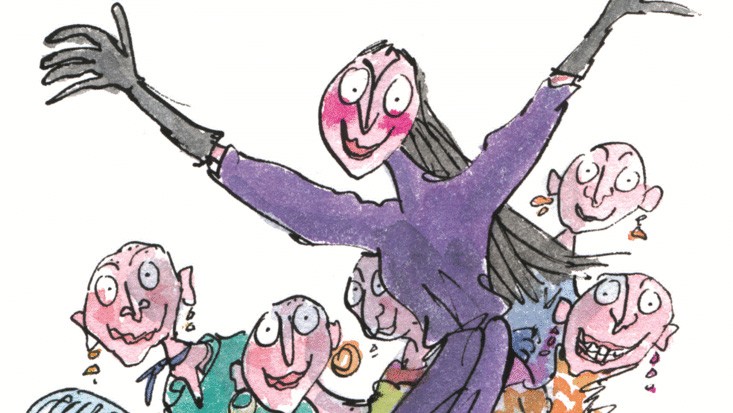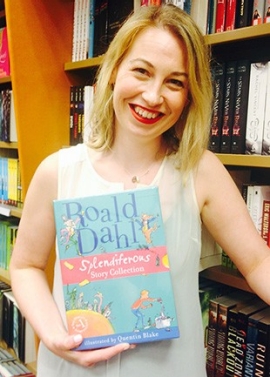But there is always a substantial cohort who name Roald Dahl’s books as significant influences on their early lives, loving his childlike rebellion against politeness. He says and represents the things that we aren’t really allowed to say or think, as one of my students perceptively put it.
Dahl’s impact on writing for children cannot be understated and he still seems like a unique, vibrant, and subversive voice in the field of children’s literature. Rowling has named him as an influence on her characterisation of the Dursley family’s grotesquery. What exactly did Dahl make possible? What makes his books so popular and enduring?
Dahl celebrates the anarchic, the grotesque, and the terrifying. His worlds are not safe worlds. James’s parents are eaten by a rampaging rhinoceros in the second paragraph of James and the Giant Peach. Matilda’s parents are neglectful at best, abusive at worst, and her school principal, Miss Trunchbull is a terrifying child-hating bully who imprisons children in The Chokey, a cupboard with jagged glass and nail encrusted walls.
Children are shrunk and imprisoned in TV screens, sucked into chocolate rivers, turned blue and inflated to bursting point, sometimes transformed forever into mice. Witches are hiding among ordinary women.
Dahl appeals to the thrill of being terrified, and the delight in seeing uncomplicatedly awful people meet their comeuppance: Aunt Sponge and Aunt Spiker rolled over and crushed by the giant peach, Miss Trunchbull chased out of the story by a mob of schoolchildren, and the witches themselves turned into mice and ruthlessly hunted down and killed by the hotel staff. Children, at least the good ones, triumph over the terrible adults.
Dahl remains firmly on the side of the child. He appeals to the humour of the body, underminining a polite distaste for talking about bodily functions — farts, food clinging to dirty beards, greedy consumption of chocolate are all brought into gleeful view.
Children revel in Dahl. Adults often find him problematic, and not without reason. Despite seeming subversive, his texts are often moralising and the fate of the children in Charlie and The Chocolate Factory comes directly from explicitly moral tales of the 18th and 19th centuries where bad children are gruesomely killed to show the dangers of playing with fire, or for even thinking sinful thoughts.
He can be reactionary and is no fan of the modern phenomenons of television or chewing gum. He fat-shames. His portrayal of the Oompa Loompas is decidedly racist. He is misogynistic — some of the worst horrors of humanity are reserved for his female characters. This is important to acknowledge and critique. And yet, he was one of the few writers to give space to intelligent and interesting female protagonists — Matilda, Sophie, and who can forget Little Red Riding Hood whipping the pistol from her knickers!
What makes Dahl endure, I think, what makes him fascinating, is his celebration of a child’s culture at odds with an adult one, the triumphing of the underdog, the breaking of all kinds of rules, and the endlessly creative disruption of language epitomised here in The B.F.G.:
‘Sophie said. “I just love the way you talk.”
“How wondercrump!” cried the B.F.G., still beaming. “How whoopsy-splunkers. How absolutely squiffling! I is all of a stutter.”
My favourite of Dahl’s books, Matilda, resonates because it is a story about the power of stories, the magic of books, and the way in which both literature and children have the power to change the world.
Susan Cahill is a professor of literature in the School of Irish Studies. Her monograph, Irish Literature in the Celtic Tiger Years: Gender, Bodies, Memory, was published by Continuum in 2011. She is also the co-editor of two collections of essays on contemporary Irish authors.
Learn more about Concordia’s School of Irish Studies.
 “Dahl appeals to the thrill of being terrified, and the delight in seeing uncomplicatedly awful people meet their comeuppance.” | Illustration by Quentin Blake, from Roald Dahl's The Witches
“Dahl appeals to the thrill of being terrified, and the delight in seeing uncomplicatedly awful people meet their comeuppance.” | Illustration by Quentin Blake, from Roald Dahl's The Witches
